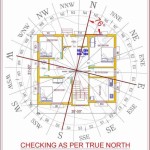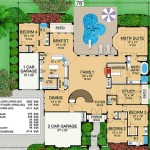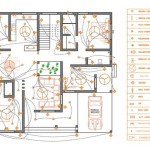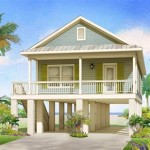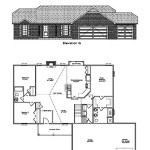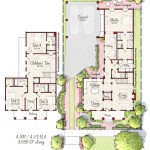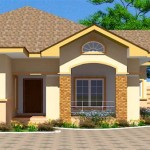Southern Living Small Cottage House Plans: A Comprehensive Guide
Southern Living magazine has long been a source of inspiration for homeowners seeking timeless designs that embody comfort, charm, and a connection to the land. Their small cottage house plans are particularly appealing, offering a pathway to owning a beautiful, functional home without the burden of excessive square footage. These plans prioritize efficient use of space, thoughtful details, and a relaxed aesthetic, perfectly suited for individuals, couples, or small families seeking a manageable and inviting living environment.
The enduring popularity of Southern Living's small cottage house plans stems from their ability to blend traditional architectural elements with modern sensibilities. They often feature characteristic Southern design features such as welcoming front porches, gabled roofs, and abundant natural light. These elements are harmoniously combined with open floor plans, efficient kitchens, and flexible living spaces that cater to contemporary lifestyles.
Choosing a pre-designed house plan offers several advantages. It provides a cost-effective alternative to custom architectural designs, while still allowing for personalization through material selections and interior finishes. These plans are typically developed by experienced architects and builders, ensuring structural integrity and compliance with building codes. Moreover, they provide a clear vision of the finished product, including detailed floor plans, elevations, and material lists.
Key Point 1: Understanding the Design Principles of Southern Living Cottages
The defining characteristics of Southern Living cottage house plans revolve around a deliberate effort to maximize space utilization and create a warm, inviting atmosphere. These homes are not simply small in size; they are strategically designed to feel spacious and comfortable, despite their limited square footage.
One fundamental principle is the emphasis on open floor plans. By minimizing the number of interior walls, living areas flow seamlessly into one another, creating a sense of openness and allowing for natural light to permeate the entire space. This design approach is particularly effective in smaller homes, as it eliminates cramped hallways and maximizes the perceived size of the living areas.
Another key element is the incorporation of outdoor living spaces. Front porches, screened-in porches, and patios are integral components of Southern Living cottage house plans. These outdoor spaces extend the living area beyond the interior walls and provide opportunities for relaxation, entertaining, and enjoying the surrounding landscape. The connection between indoor and outdoor living is a hallmark of Southern architecture and contributes significantly to the overall appeal of these homes.
Attention to detail is also paramount. Southern Living cottage house plans are characterized by carefully selected architectural details that enhance the home's aesthetic appeal. These details may include decorative moldings, wainscoting, built-in shelving, and exposed beams. These small touches add character and personality to the home, creating a sense of craftsmanship and attention to detail.
Finally, natural light is a crucial design consideration. Large windows, strategically placed skylights, and French doors are used to maximize the amount of natural light entering the home. Natural light not only brightens the interior spaces but also enhances the overall sense of spaciousness and well-being. The careful placement of windows also considers privacy and energy efficiency, ensuring that the home remains comfortable and energy-efficient throughout the year.
Key Point 2: Exploring Popular Southern Living Small Cottage House Plans
Southern Living offers a diverse range of small cottage house plans, each with its own unique features and aesthetic appeal. While specific plan numbers and availability can change, certain recurring themes and popular styles are consistently represented in their collections.
One popular style is the "farmhouse cottage," which draws inspiration from traditional rural architecture. These plans often feature gabled roofs, board-and-batten siding, and large front porches. Interior spaces are typically characterized by rustic details, such as exposed beams, shiplap walls, and farmhouse sinks. These homes evoke a sense of warmth, simplicity, and connection to the land.
Another common style is the "coastal cottage," designed to capture the relaxed atmosphere of coastal living. These plans often feature light and airy interiors, with color palettes inspired by the sea and sky. Outdoor spaces, such as wraparound porches and decks, are designed to maximize views of the surrounding landscape. Coastal cottages often incorporate nautical-inspired details, such as porthole windows, rope railings, and shingle siding.
The "bungalow cottage" is another enduring favorite. Bungalows are characterized by their low-pitched roofs, wide eaves, and prominent front porches. These homes often feature open floor plans and efficient use of space. Bungalows are typically designed with a focus on simplicity and practicality, making them well-suited for small families or empty nesters.
Many Southern Living small cottage house plans incorporate elements of the "Craftsman" style. Craftsman homes are known for their handcrafted details, such as exposed rafter tails, tapered columns, and built-in cabinetry. These homes often feature earthy color palettes and natural materials, reflecting a connection to the natural world.
Beyond these specific styles, Southern Living also offers a variety of other small cottage house plans that blend different architectural influences and cater to diverse lifestyle needs. These plans may incorporate elements of traditional Southern architecture, such as Greek Revival columns and formal entryways, or they may embrace more contemporary designs with clean lines and minimalist aesthetics. The key is to find a plan that aligns with individual preferences and the specific needs of the homeowner.
Key Point 3: Considerations When Selecting and Adapting a Small Cottage House Plan
Choosing the right small cottage house plan requires careful consideration of several factors, including budget, lot size, lifestyle needs, and personal preferences. It is essential to thoroughly evaluate each plan before making a final decision.
Budget is a primary consideration. The cost of building a home can vary significantly depending on the size, materials, and location. It is important to establish a realistic budget and select a plan that falls within those financial constraints. Consider not only the cost of the plan itself but also the cost of materials, labor, and site preparation.
Lot size and orientation are also crucial factors. The plan must be compatible with the dimensions and topography of the building site. Consider the setbacks required by local zoning regulations and the orientation of the house to maximize sunlight and views. A site analysis may be necessary to determine the best placement of the home on the lot.
Lifestyle needs are another important consideration. The plan should accommodate the current and future needs of the homeowner. Consider the number of bedrooms and bathrooms required, the size of the living areas, and the need for storage space. Also, consider any special requirements, such as accessibility features or a home office.
Personal preferences play a significant role in the selection process. The plan should reflect the homeowner's aesthetic tastes and lifestyle. Consider the architectural style, the interior layout, and the overall feel of the home. Review multiple plans and compare their features to identify the best fit.
While pre-designed house plans offer a cost-effective solution, they may require some adaptation to suit specific needs. Most plans can be modified to accommodate changes to the floor plan, exterior elevations, or material selections. However, it is important to consult with a qualified architect or builder to ensure that any modifications are structurally sound and comply with building codes. Consider changes to kitchen layouts, bathroom configurations, and room sizes to personalize the space.
Finally, it is essential to consult with local building officials to ensure that the chosen plan meets all applicable building codes and zoning regulations. This step can help to avoid costly delays and ensure that the construction process proceeds smoothly. Verify requirements related to energy efficiency, fire safety, and accessibility. Obtaining the necessary permits is a critical step in the home building process.

Cottage Style Annual 2024 Southern Living House Plans Coastal
7 Dreamy Guest House Plans

Cottage Of The Year Style House Plans Tiny

Our Best House Plans For Cottage Plan Southern

Grace Park Cottage Southern Living House Plans
:max_bytes(150000):strip_icc()/sparta_0_0_0-d60217d2c379489398f52916b81e268c.jpg?strip=all)
40 Small House Plans That Are Just The Right Size
18 Open Floor House Plans Built For Entertaining

Our Town Plans

Cottage Of The Year

Our Town Plans

